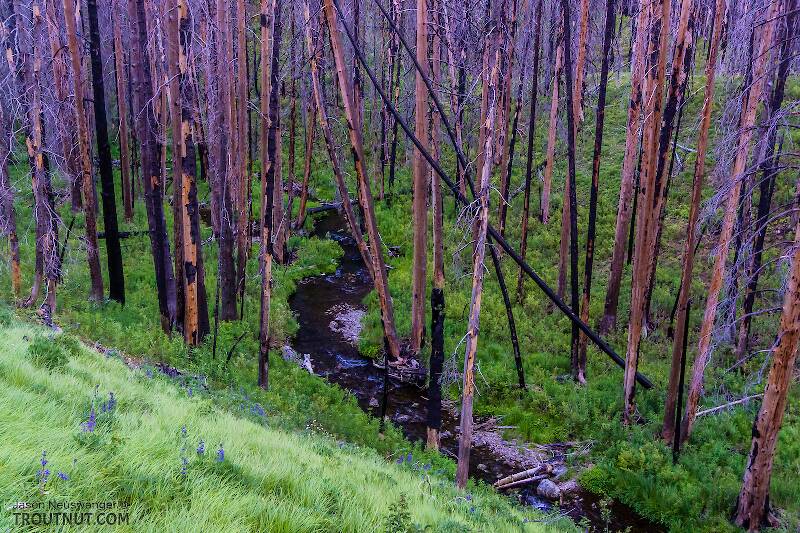
Blue-winged Olives
Baetis
Tiny Baetis mayflies are perhaps the most commonly encountered and imitated by anglers on all American trout streams due to their great abundance, widespread distribution, and trout-friendly emergence habits.


Mayfly Species Rhithrogena uhari
Species Range
Physical description
Most physical descriptions on Troutnut are direct or slightly edited quotes from the original scientific sources describing or updating the species, although there may be errors in copying them to this website. Such descriptions aren't always definitive, because species often turn out to be more variable than the original describers observed. In some cases, only a single specimen was described! However, they are useful starting points.
Female Spinner
Wing length: 7 mm
A small pale species.
Female imago pale yellowish. A black mark below antenna; faint brownish markings above frontal margin; base of antenna white; basal portion of filament dark, remainder light brown. Thoracic notum yellowish; metanotum yellow-brown, darker posteriorly. Small dark spot near center of lateral margin of pronotum. Faint purplish shading near wing bases; brown shading on each side of scutellum. Pleura paler than notum; purplish marks below wing roots; faint dark lines above bases of middle and hind legs. Sternum pale, mesosternum yellow. Legs pale whitish. Small round black spot at center of each femur. Tarsi smoky, with black spot dorsally at each joining. Wings semi-hyaline whitish, with faint milky tinge. Opaque cloud in stigmatic area. Venation whitish. Abdominal tergites light yellowish brown; 1-5 with purplish posterior margins; 6-10 more yellow, unbanded. Pleural fold whitish. Sternites pale yellow, immaculate. Tails pale yellow, joinings opaque. Female very similar to Rhithrogena exilis and R. fuscifrons; abdominal tergites rather darker than in the former, general color paler than the latter.
Start a Discussion of Rhithrogena uhari
References
- Needham, James G., Jay R. Traver, and Yin-Chi Hsu. 1935. The Biology of Mayflies. Comstock Publishing Company, Inc.
Mayfly Species Rhithrogena uhari
Species Range
Resources
- NatureServe
- Integrated Taxonomic Information System
- Global Biodiversity Information Facility
- Described by Traver (1933)

